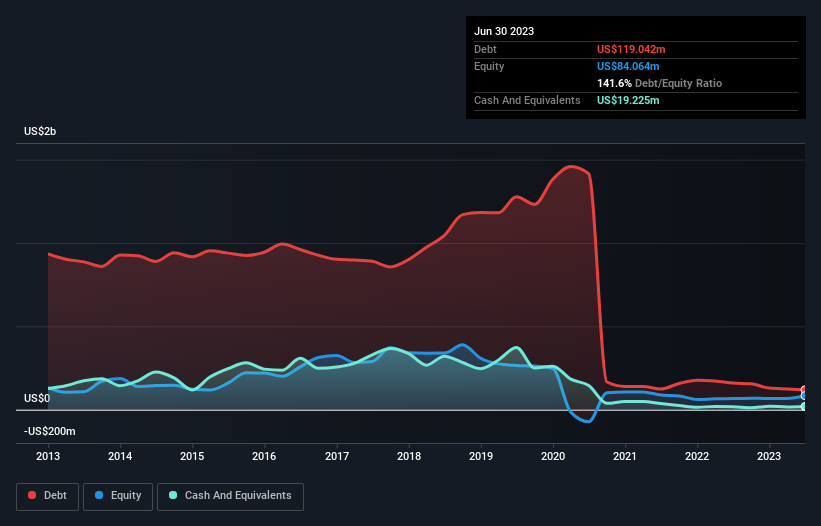Does Knafaim Holdings (TLV:KNFM) Have A Healthy Balance Sheet?
David Iben put it well when he said, 'Volatility is not a risk we care about. What we care about is avoiding the permanent loss of capital.' It's only natural to consider a company's balance sheet when you examine how risky it is, since debt is often involved when a business collapses. Importantly, Knafaim Holdings Ltd. (TLV:KNFM) does carry debt. But the real question is whether this debt is making the company risky.
When Is Debt Dangerous?
Generally speaking, debt only becomes a real problem when a company can't easily pay it off, either by raising capital or with its own cash flow. In the worst case scenario, a company can go bankrupt if it cannot pay its creditors. However, a more usual (but still expensive) situation is where a company must dilute shareholders at a cheap share price simply to get debt under control. Of course, plenty of companies use debt to fund growth, without any negative consequences. The first step when considering a company's debt levels is to consider its cash and debt together.
View our latest analysis for Knafaim Holdings
What Is Knafaim Holdings's Debt?
As you can see below, Knafaim Holdings had US$119.0m of debt at June 2023, down from US$159.9m a year prior. However, it does have US$19.2m in cash offsetting this, leading to net debt of about US$99.8m.

How Strong Is Knafaim Holdings' Balance Sheet?
The latest balance sheet data shows that Knafaim Holdings had liabilities of US$47.8m due within a year, and liabilities of US$85.2m falling due after that. Offsetting these obligations, it had cash of US$19.2m as well as receivables valued at US$5.17m due within 12 months. So its liabilities outweigh the sum of its cash and (near-term) receivables by US$108.6m.
This deficit casts a shadow over the US$41.0m company, like a colossus towering over mere mortals. So we definitely think shareholders need to watch this one closely. After all, Knafaim Holdings would likely require a major re-capitalisation if it had to pay its creditors today.
We use two main ratios to inform us about debt levels relative to earnings. The first is net debt divided by earnings before interest, tax, depreciation, and amortization (EBITDA), while the second is how many times its earnings before interest and tax (EBIT) covers its interest expense (or its interest cover, for short). This way, we consider both the absolute quantum of the debt, as well as the interest rates paid on it.
As it happens Knafaim Holdings has a fairly concerning net debt to EBITDA ratio of 5.6 but very strong interest coverage of 19.0. This means that unless the company has access to very cheap debt, that interest expense will likely grow in the future. Notably, Knafaim Holdings's EBIT launched higher than Elon Musk, gaining a whopping 8,767% on last year. The balance sheet is clearly the area to focus on when you are analysing debt. But it is Knafaim Holdings's earnings that will influence how the balance sheet holds up in the future. So if you're keen to discover more about its earnings, it might be worth checking out this graph of its long term earnings trend.
Finally, a business needs free cash flow to pay off debt; accounting profits just don't cut it. So it's worth checking how much of that EBIT is backed by free cash flow. Over the last three years, Knafaim Holdings saw substantial negative free cash flow, in total. While investors are no doubt expecting a reversal of that situation in due course, it clearly does mean its use of debt is more risky.
Our View
On the face of it, Knafaim Holdings's conversion of EBIT to free cash flow left us tentative about the stock, and its level of total liabilities was no more enticing than the one empty restaurant on the busiest night of the year. But on the bright side, its interest cover is a good sign, and makes us more optimistic. Looking at the bigger picture, it seems clear to us that Knafaim Holdings's use of debt is creating risks for the company. If everything goes well that may pay off but the downside of this debt is a greater risk of permanent losses. The balance sheet is clearly the area to focus on when you are analysing debt. However, not all investment risk resides within the balance sheet - far from it. For example Knafaim Holdings has 4 warning signs (and 1 which can't be ignored) we think you should know about.
At the end of the day, it's often better to focus on companies that are free from net debt. You can access our special list of such companies (all with a track record of profit growth). It's free.
Valuation is complex, but we're here to simplify it.
Discover if Knafaim Holdings might be undervalued or overvalued with our detailed analysis, featuring fair value estimates, potential risks, dividends, insider trades, and its financial condition.
Access Free AnalysisHave feedback on this article? Concerned about the content? Get in touch with us directly. Alternatively, email editorial-team (at) simplywallst.com.
This article by Simply Wall St is general in nature. We provide commentary based on historical data and analyst forecasts only using an unbiased methodology and our articles are not intended to be financial advice. It does not constitute a recommendation to buy or sell any stock, and does not take account of your objectives, or your financial situation. We aim to bring you long-term focused analysis driven by fundamental data. Note that our analysis may not factor in the latest price-sensitive company announcements or qualitative material. Simply Wall St has no position in any stocks mentioned.
About TASE:KNFM
Knafaim Holdings
Through its subsidiaries, operates in the aviation industry worldwide.
Flawless balance sheet with proven track record.
Similar Companies
Market Insights
Community Narratives



